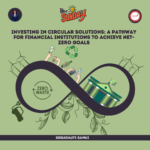By Payal Sachdeva
The concept of “Negative interest rate” was flourished after 2008 financial crisis when all other means to reinvigorate the economy had been exhausted. It is a monetary policy tool employed by central banks to combat deflation. This tool was first adopted by Sweden’s central bank in July 2009 when the overnight deposit rate was lowered to -0.25%. European Central bank did the same in 2014 followed by Bank of Japan recently which has resulted in $10 trillion worth of government debt carrying negative yield.
A common misconception with the concept is that the depositors think they need to pay interest for their deposits to the bank. However, this is not true. Usually, commercial banks are required to keep a certain amount of money as reserves at their central bank as a safeguard against bank runs and to accommodate for last minute loans. The central banks generally pay the interest rate on these deposits, however, in Japan and Eurozone, banks have to pay central banks for parking their reserves.
Since commercial banks are charged for parking their reserves with the central bank in negative interest rate regime, they prefer to park that money with other banks to manage liquidity and meet the reserve requirements at a lower rate with an intention to earn some interest. Since a lot of banks try to get rid of their excess reserves, the competition pushes the interbank rate down which enables banks to pass on the benefits to their customers in the form of lower mortgage, personal loan, education loan etc. This is the ultimate objective of lower interest rate – to encourage investment and consumption, thereby stimulating the economy. Also, it might encourage investors to seek avenues abroad for better returns, which eventually leads to the depreciation of the currency due to the currency outflow. This would in turn boost exports to revive the economy. Euro has depreciated against the dollar by 20% since ECB introduced negative deposit rate.
However, a major concern is that banks would be unwilling to increase the lending as the profit margin between lending and deposit rate squeezes when they absorb the cost of negative interest rate. Though central bankers say it’s too early to gauge the impact of interest rate, they predict that if more and more central banks use this tool, it could actually lead to a currency war of devaluations.














Leave a comment